EVERFIT PHYSIO - The Shoulder
Physiotherapy, December 07, 2016
I love helping people with shoulder issues. The first step in solving any shoulder dysfunction is understanding how this incredible joint works. Then you will blend the exercises in a way that promotes progression with your daily activity.

Thanks for taking the time to further your learning about how to self treat and future manage your shoulder issue.
The shoulder is a fascinating joint as it's super mobile but also inherently unstable. Its held in place and moves with the co-ordination of many surrounding muscles. The scapular thoracic and rotator cuff muscle groups have to work in harmony to ensure quality movement patterns are adhered to otherwise niggles develop. Sudden injuries as well as long term niggles cause poor compensatory patterns that will result in pain felt in the neck and shoulder region.
1) Backwards Shoulder Rolls - sit or stand upright ensuring your head is on top of the spinal column, roll the shoulders backwards without discomfort.
2) Shoulder Blade Pull Backs - again sit up or stand, and draw the blades together and slightly down, hold for 3-5 sec and repeat up to 4 times. DON"T oversqueeze. Visualise an egg between the blades that you don't want to crush.
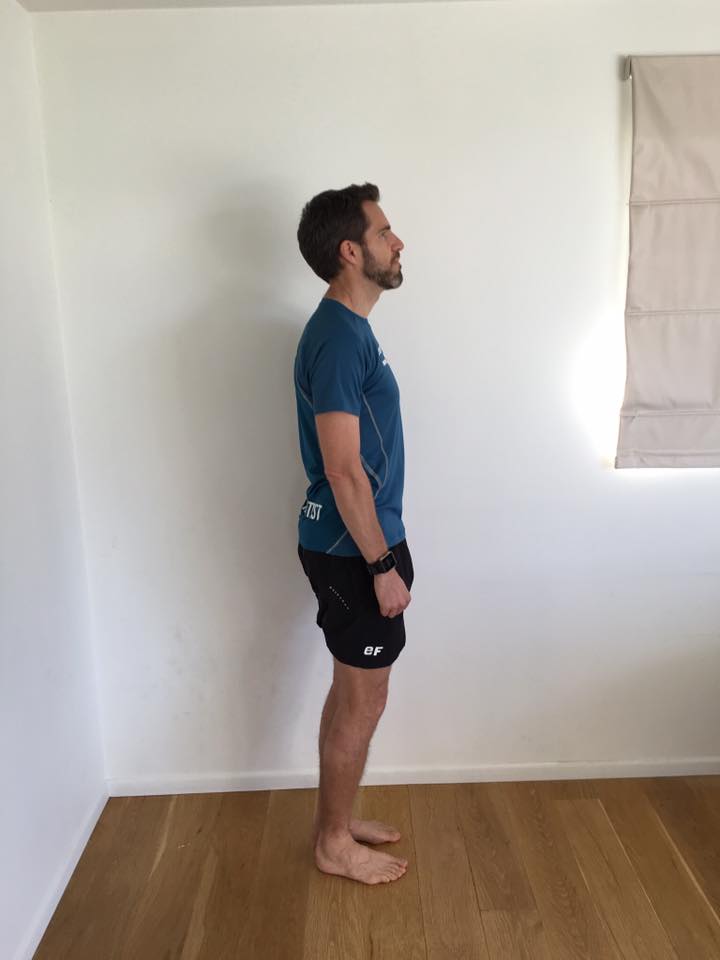

3) Chest Stretch - a more aggressive method to re-establish a neutral posture is to hold your hands together behind your back at waist level and draw down - hold for 5-10sec up to 3 x.
All of these micro-pauses can be done up to every 40min of your working day. If that sounds too much to do - just start somewhere - even 3-4 x a day is a great start. remember our bodies are designed to move in large actions. When the shoulder and neck is held in forward slumped positions with small patterns of movement this sets up aches and discomfort that accumulate over time, interrupting normal muscle flow, causing niggles, and contributing to discomfort, pain, and injury.
Once you have an ongoing plan for correcting poor posture the stability and strengthening can start. We have to improve stabilisation (and strength) of the scapular thoracic muscles (these come off the spine and help hold/move the shoulder blade) and the dynamic strengthening (and stability) of the rotator cuff (these dynamic stabilisers come from the shoulder blade and attach on to the head of the humerus). ALL of these muscles have to work together in symphony to HOLD the shoulder in the socket (glenoid), keeping the scapular stable, tracking smoothly; while also working with BIGGER mobiliser muscles to move the arm around. If the smaller muscles closer to the shoulder girdle (scapular thoracic and rotator cuff) are not working correctly (due to excessive tightness, weakness, poor firing, and injury) then the WHOLE symphony of movement is compromised. This causes jamming and pinching at the joint, a feeling of instability, and tightness at certain points of the range. Having a specific shoulder diagnosis is meaningless without an ongoing plan to correct the underlying issues.
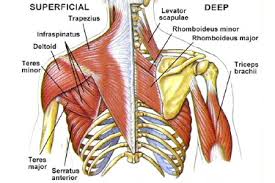
Following are the stability and strength exercises to help promote the correct flow of movement. This allows the whole shoulder complex to mobilise smoothly as designed. Your programme will have elements of these exercises. The amount you do, and the progression will be individualised to blend in with your current capacity and activity levels. No exercise should reproduce your symptoms. You might have muscle fatigue and slight ache for 30-45min following exercise but this should not get worse as the days go by. If your morning marker pain (stiffness, and pain) worsens then have a day off exercises and start again at 50% of what you completed 48 hours earlier. It is important to begin any exercise programme well within capacity and progress as your body adapts. This will vary between individuals. DO not compare to other people with the "same" diagnosis. NO injury is the same. You must listen to your body, and discuss with your therapist the best plan to progress.
4) Scapular Together and Apart (Cat/Camel) - Place hands at shoulder height (or a little below or niggly) and keep elbow soft - not moving them, then while keeping your shoulders down away from the ears let the shoulder blades come together and apart in a smooth motion.
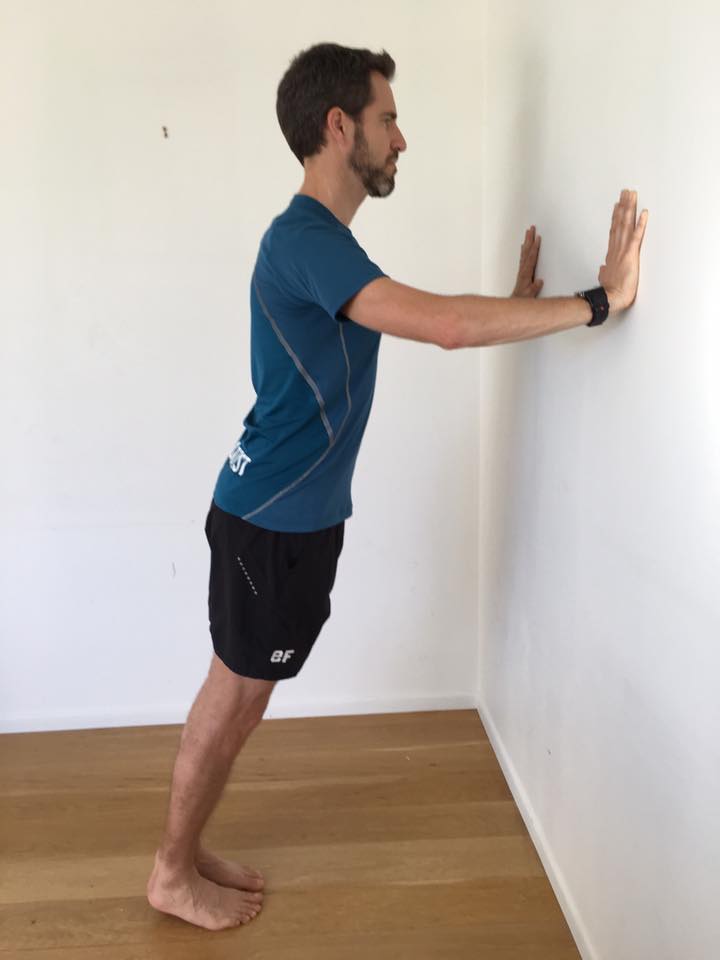
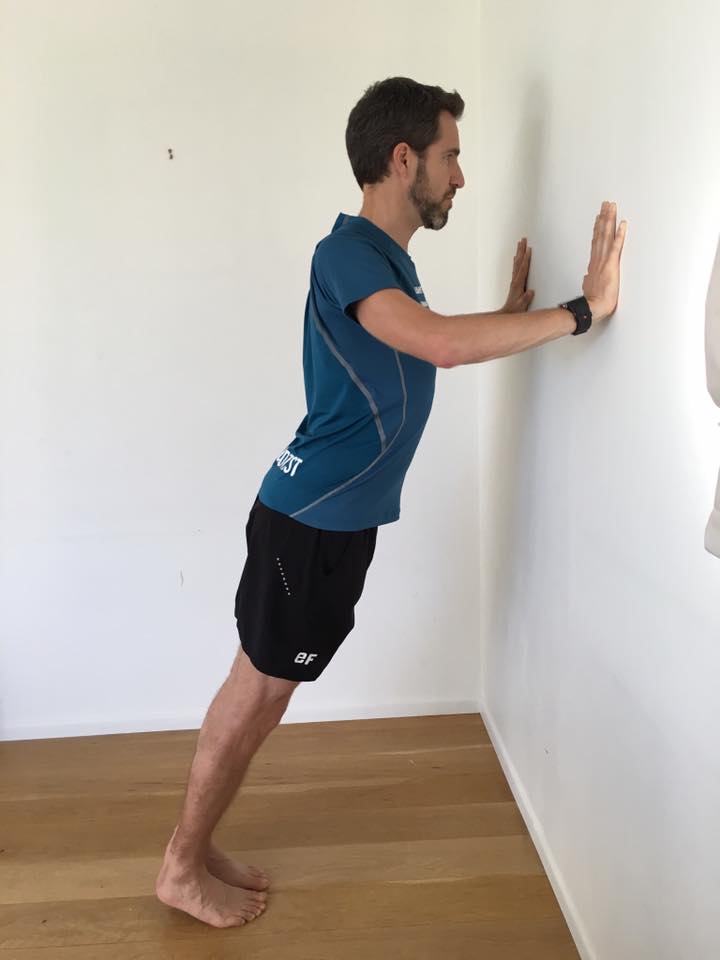
5 Cable Row - Sit in a chair and place theraband around foot or door knob and while keeping shoulders down bring the shoulder blades together and apart in a smooth motion.
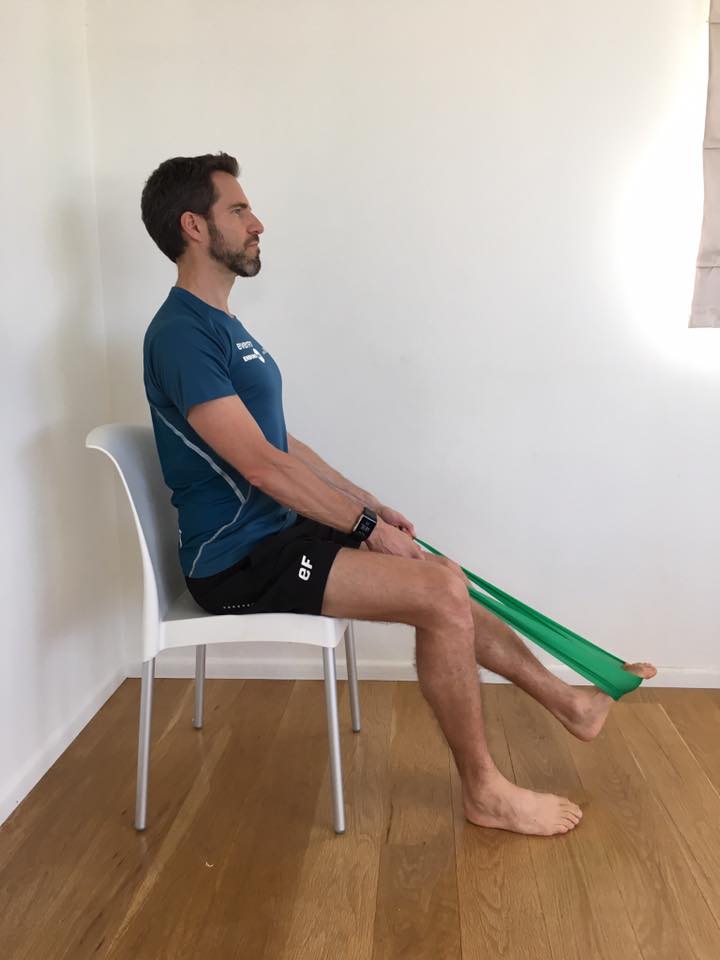
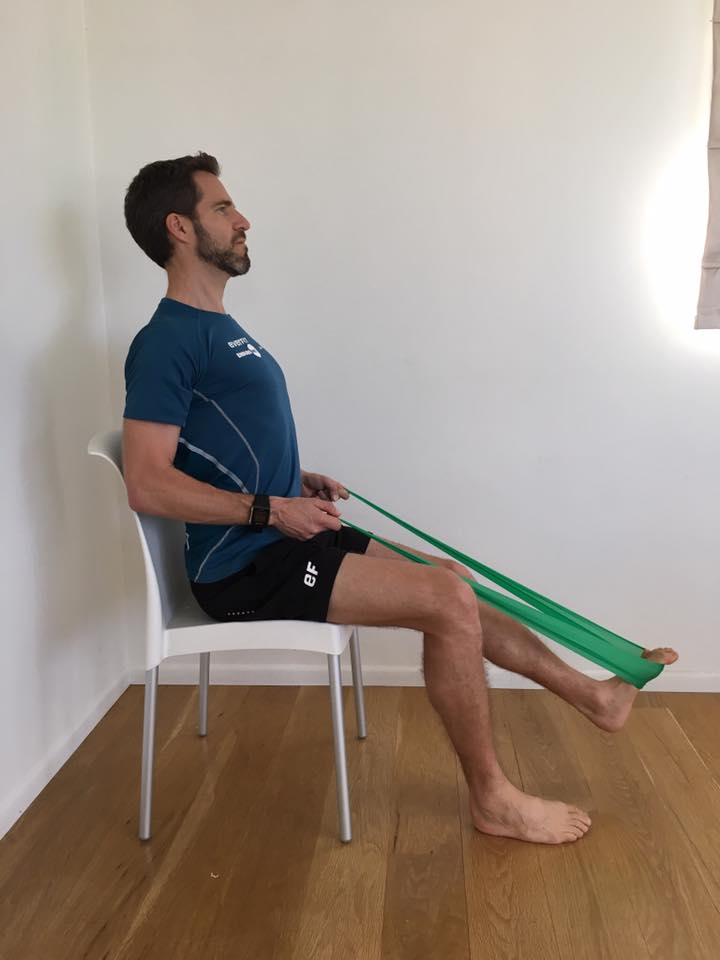
6) Prone Cat/Camel - On hands and knees balance the weight between the four points of hands and knees and move the shoulder blades together and apart while keeping the neck elongated. Keep the movement smooth and controlled.
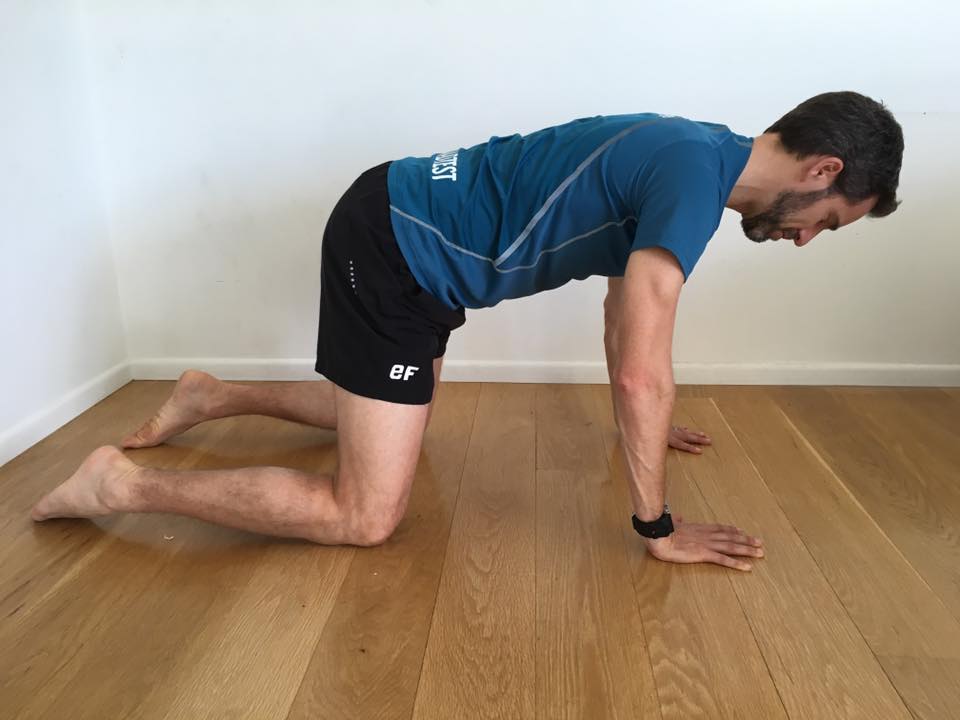
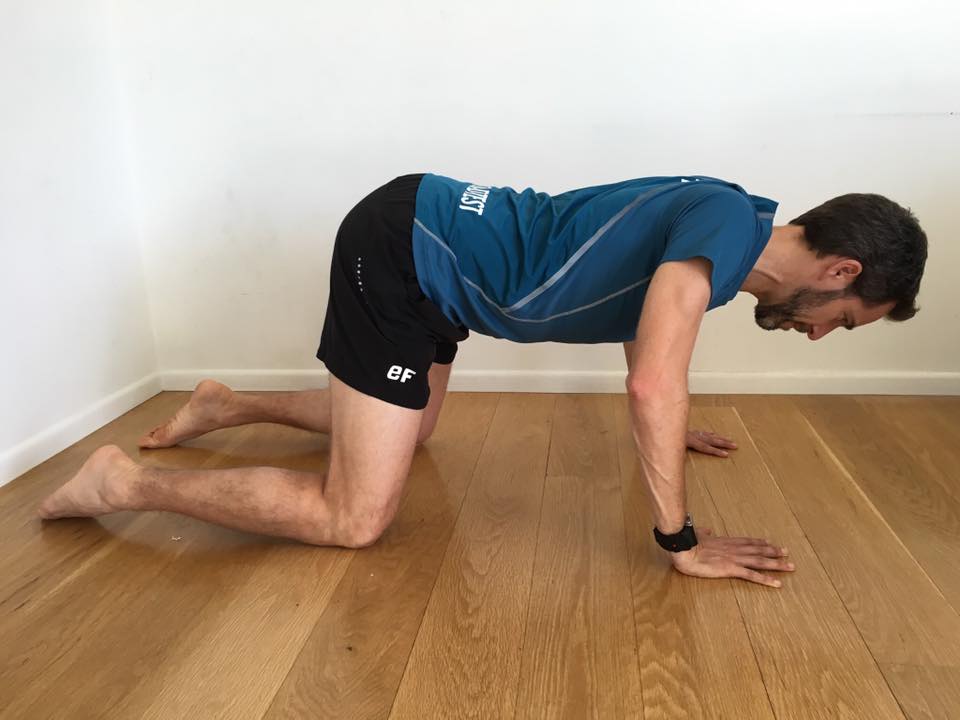
7) Wall Push up - Hands against wall and perform a push up while keeping the body straight (don't let the hips "collapse" towards the wall). This is a modification of the usual push up.


8) Knee Press Up - The next modification towards a FULL press up is the knee press up. Keep the body and neck strong and controlled, go down as far as your shoulders allow and come back to the starting point.
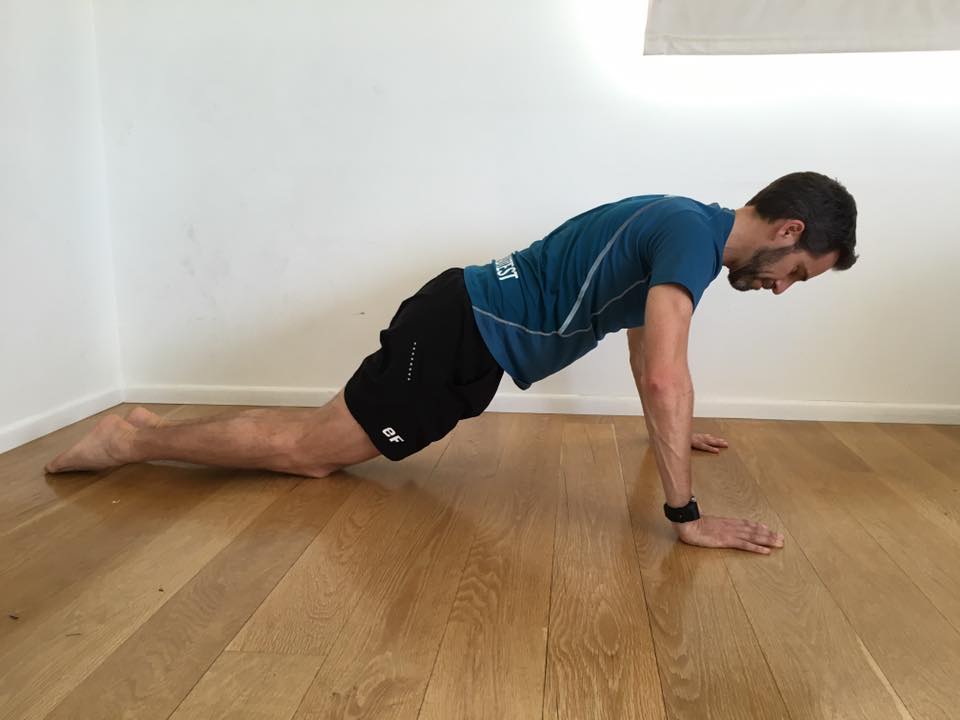

9) FULL Press Up - The FULL press up puts more pressure on the shoulder complex and demands more firing from the core. This is the ultimate FULL body exercise and once built up to should be done on a 3 x weekly to daily basis to keep full body strong. This enhances functional strength and prevents injury IF completed within capacity.

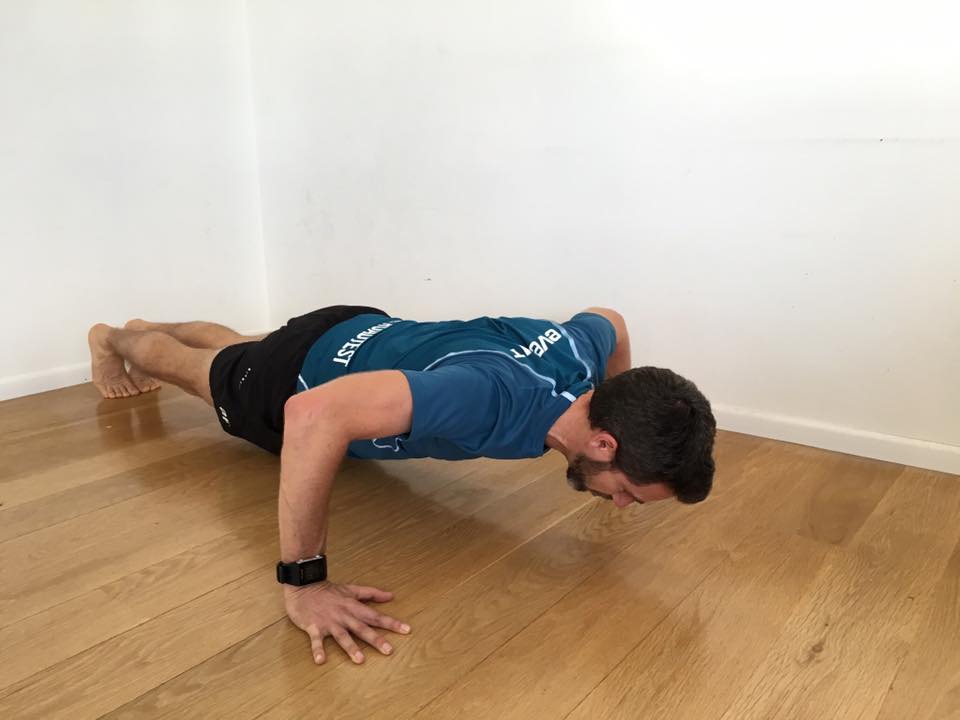
10) Press Up Variations - You can place your hands wider or closer together (as pictured) to work different portions of muscle. The wide placement (twist your hands slightly outward to take pressure off your wrists) work the outer portion of the pectorial, while the close position creates greater muscle activation (as shown in the Aug 2005 Journal of strength and conditioning). Inhale on the way down (concentric) and exhale on the way up (eccentric).
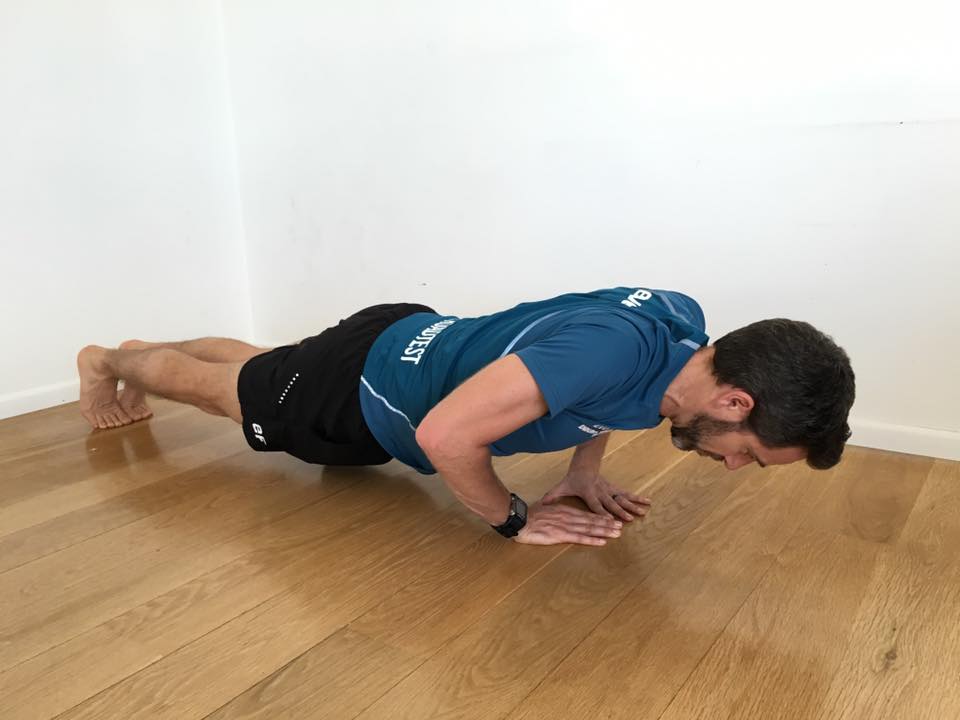
11) Bird/Dog - In a prone kneeling starting position lift opposite arm and leg while keeping the pelvis and torso controlled (visualise someone trying to eat dinner off you back). Keep your breathing under control and the neck long. This incorporates scapular and core stability - remember the body does not function in isolation.
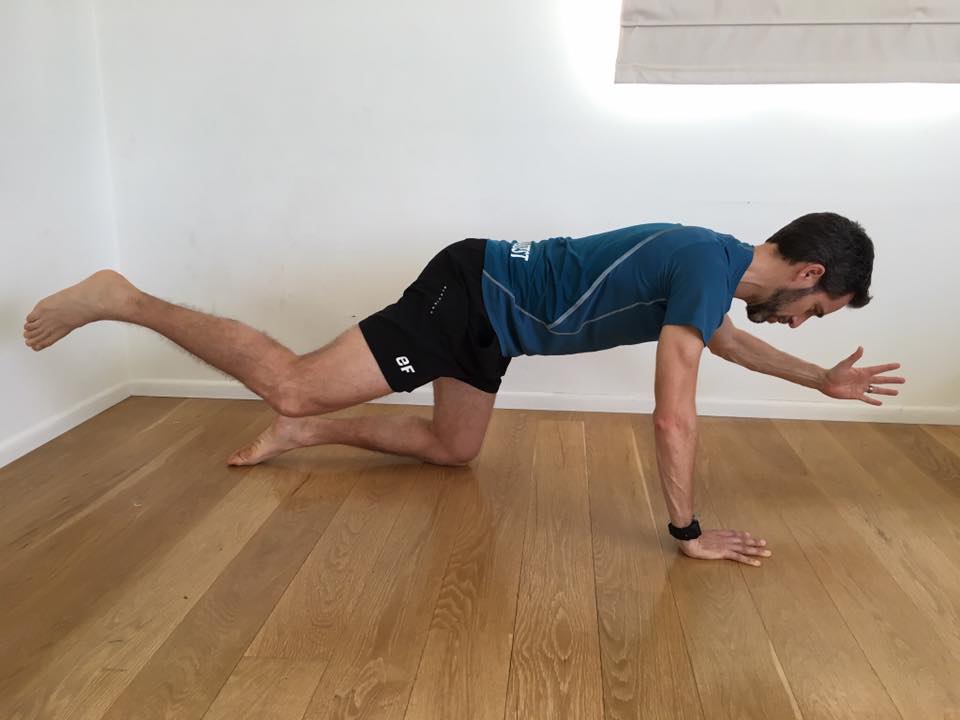
12) Front Lat Pull Down - Hook the theraband over a door (place a towel under the theraband to prevent nicks and tears), then kneel and shuffle close so your nose is close to the door. Then take your arms out wide and bring the shoulder blades down and together. Return to the starting position with control.
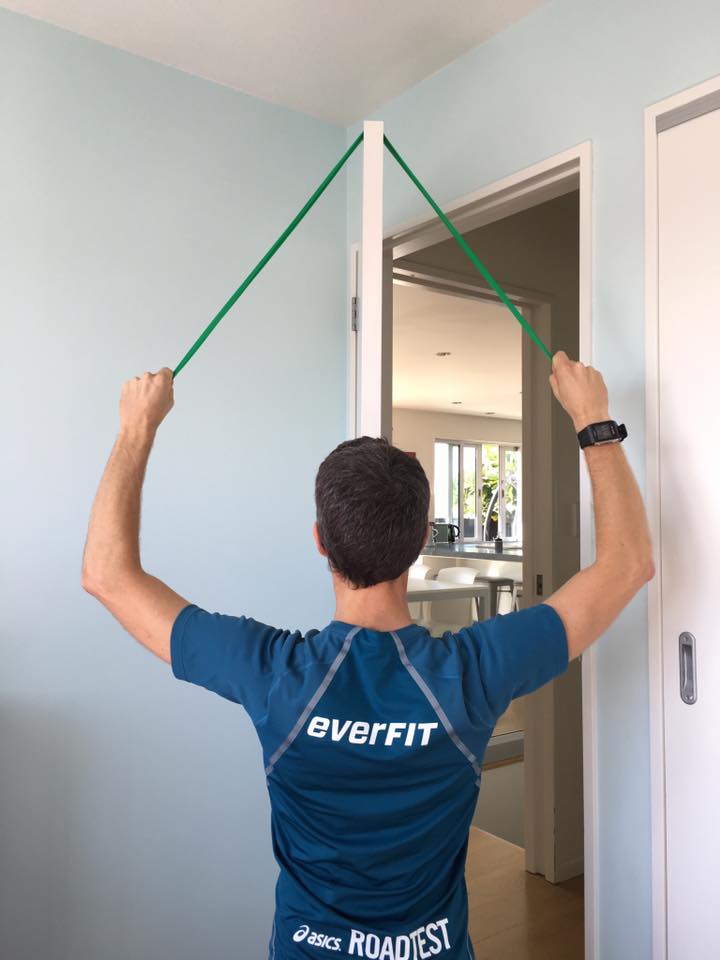
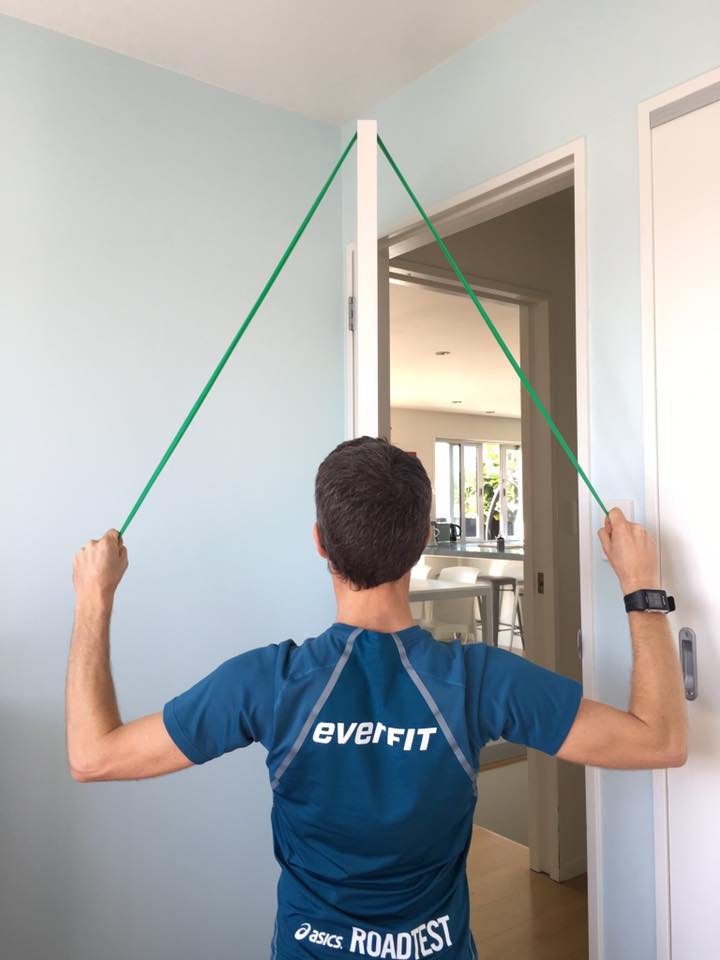
13) Bicep Curl - Stand upright, place the theraband under your foot. Start with your palm facing towards yourself then as you curl up supinate your forearm (turn the forearm out) so the palm is facing towards the ceiling, return to the same position. Make sure your shoulders are drawn back while you complete the curls.

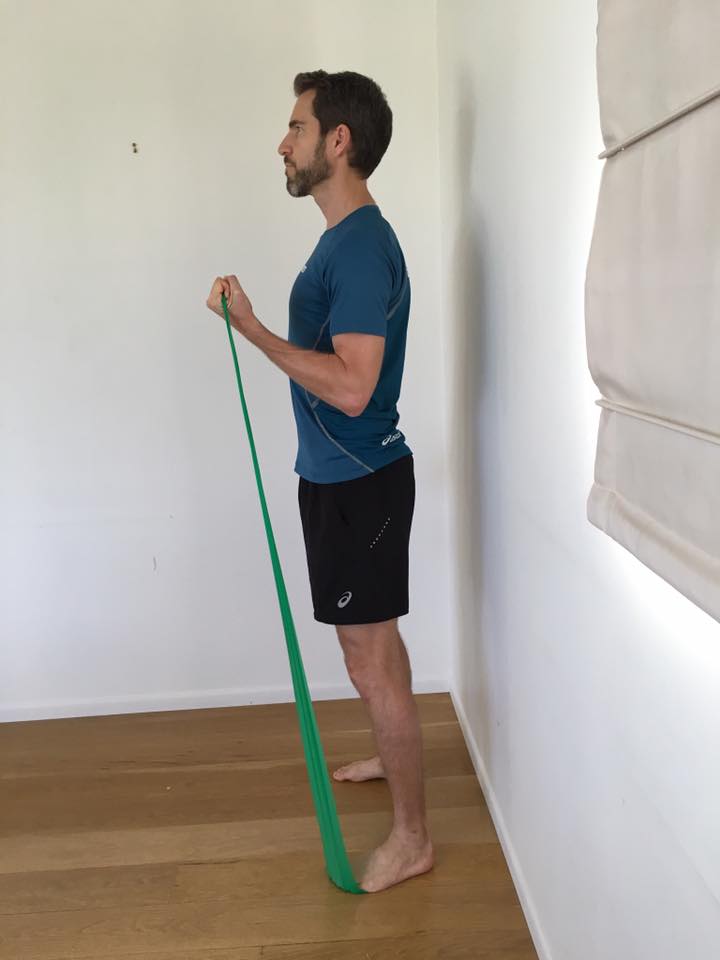
14) Tricep Pulldown - First tie a knot in the theraband and shut it in the door. Then stand facing the door with your shoulders drawn back and your elbow at your side. Straighten your arm and return to the starting position.

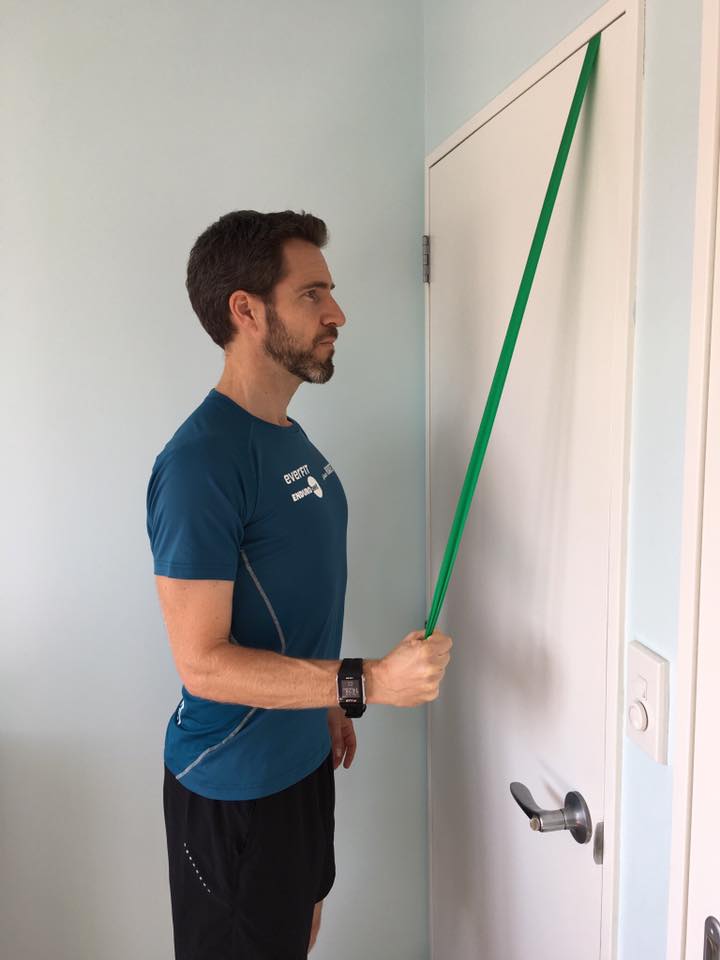
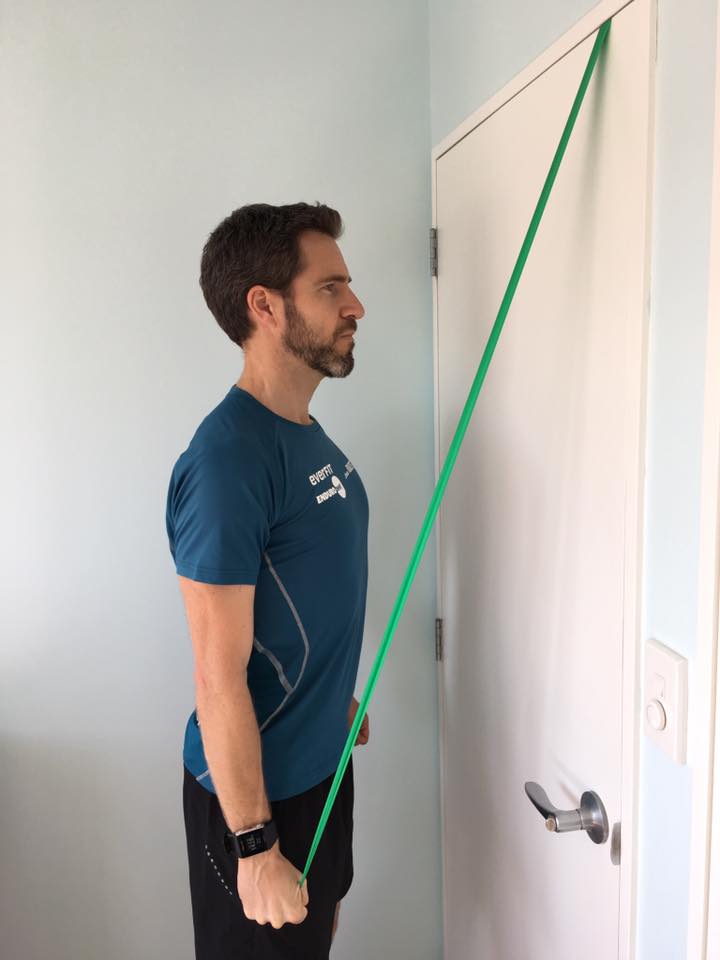
15) External Rotation - Tie the theraband to the door knob (or hold in other hand), draw the shoulders back, and hold the elbow in to your side. Rotate the hand out (not into pinch or pain) then slowly return to the starting position.
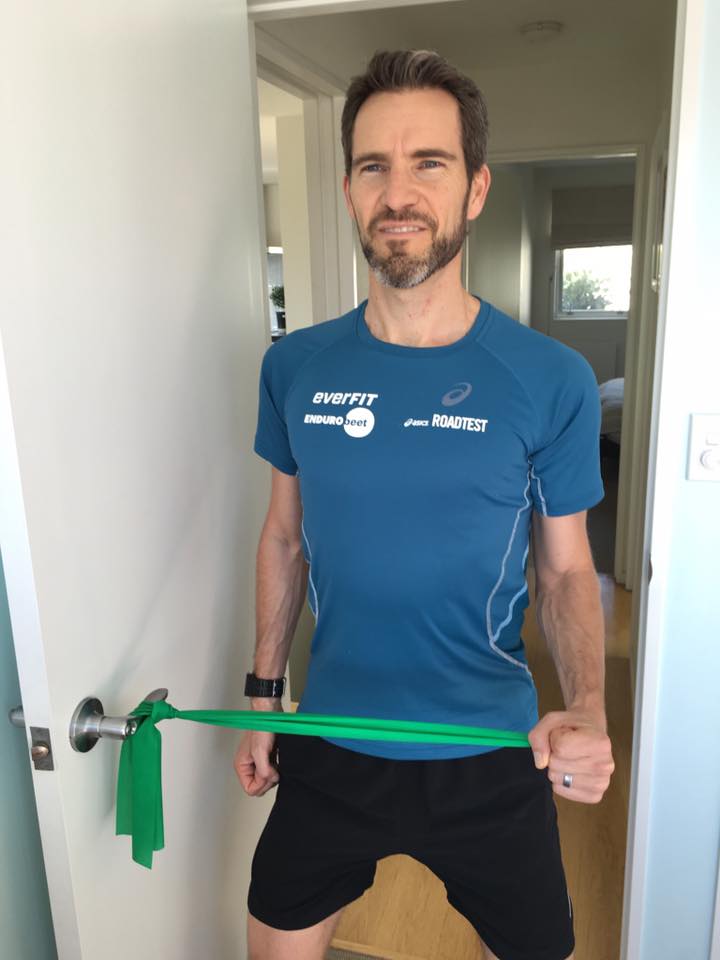

16) Swiss Ball Walk Out - This works full body stability as well as progressing the strength when introducing scapular push ups or regular push ups off the ball. Walk out to your capacity (either pelvis, thighs, knees, shins, or ankles) HOLD full body stability and strong (while breathing) and perform the circles (moving whole body around hands while not letting the body "snake"), scapular push ups, or push ups. Walk back off the ball between sets and rest.
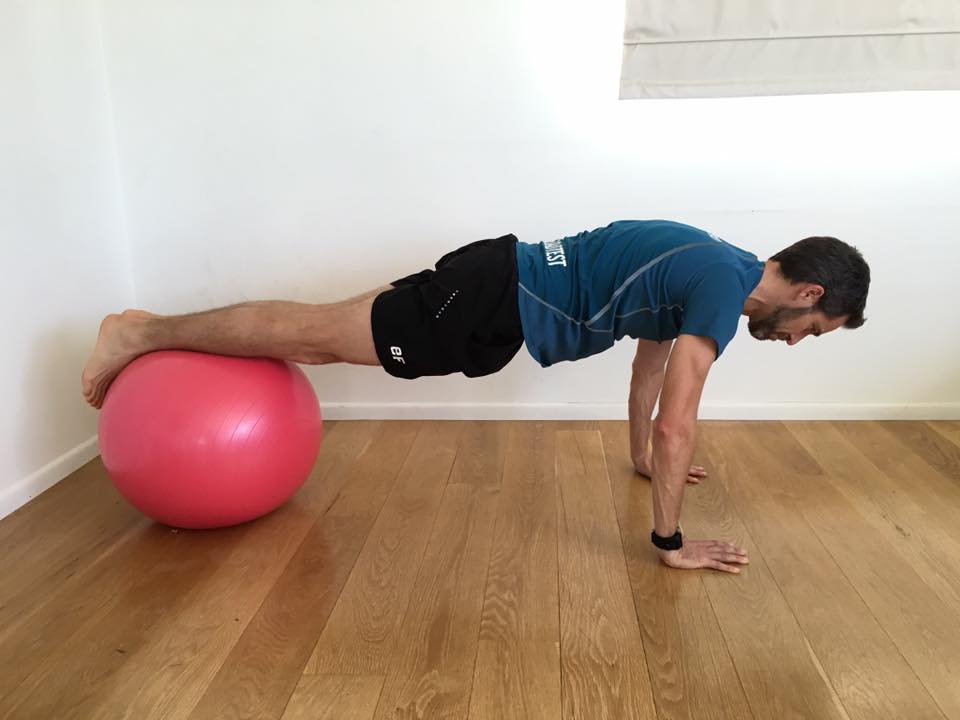
Swiss ball Wall Roll - rolling the ball on the wall in a controlled fashion promotes synergy between the stabilisers and mobilisers around the entire shoulder girdle. Start within capacity closer to the body with SLOW movements, progress by moving the ball away from the body and increasing the range and speed of the movements.

.jpg?version=8)